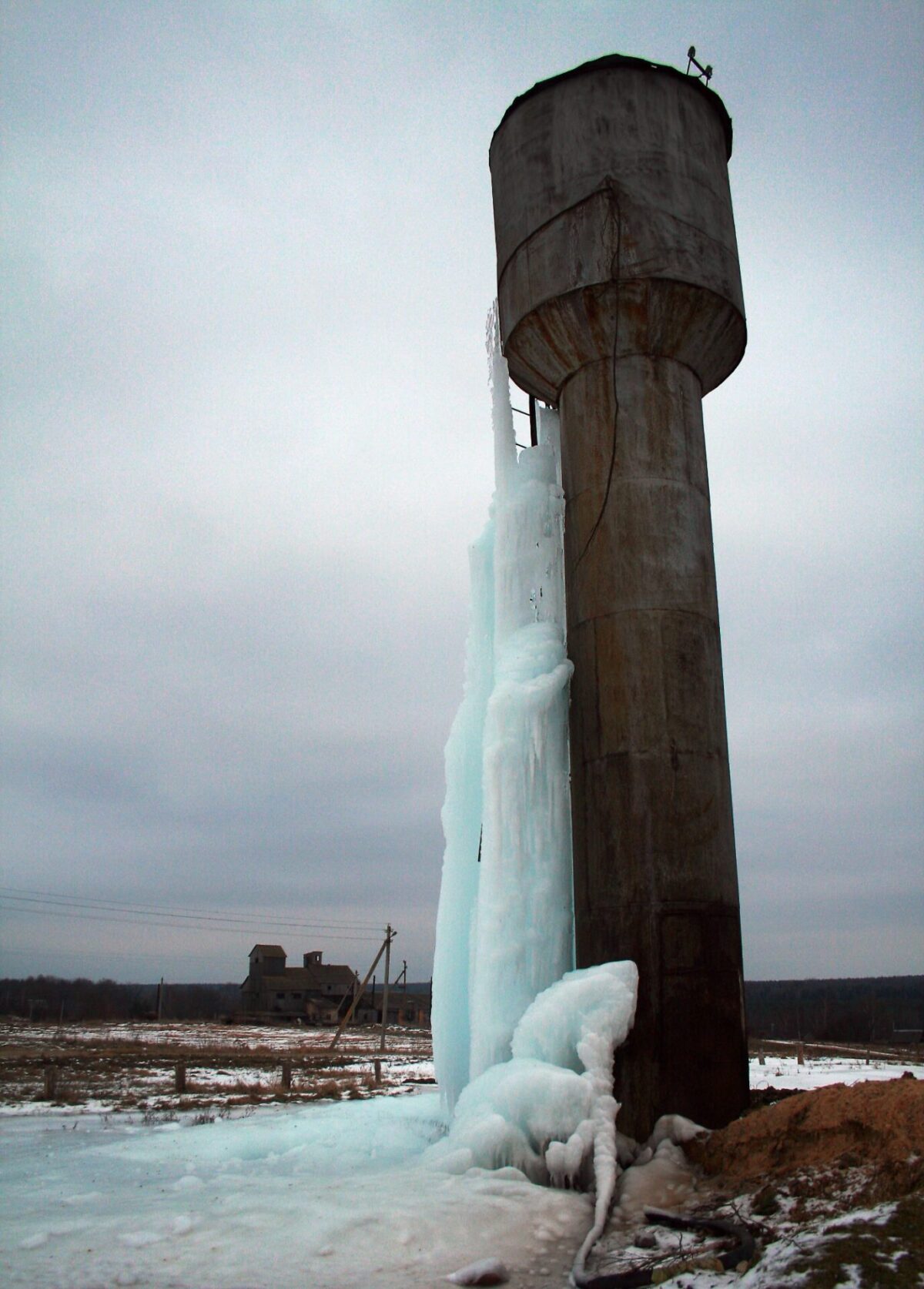Water Tank Freeze Protection: How to Prevent Freezing and Damage

Posted on September 21, 2023 by Brent Phillips
Water tank freeze protection is a crucial aspect of winter maintenance for water asset managers. Freezing temperatures can cause significant damage to a water storage tank, leading to costly repairs and disruptions in water supply.
Knowing how to prevent freezing water in storage containers is crucial for optimal performance and longevity. By taking necessary precautions, you can ensure that the containers remain in good working condition for an extended period.
When water inside a tank freezes, it expands, exerting pressure on the tank’s walls. This pressure can result in leaks and damage to the protective coating, including cracking or complete structural failure.
Frozen water can also block pipes and valves, further impeding water flow. Preventing such issues requires proactive measures to prevent freezing.
Insulation or heaters can keep the tank at a reasonable temperature in cold weather. These measures help prevent freezing and minimize the risk of damage.
Proper freeze protection saves money on repairs and guarantees continuous access to clean water in winter when demand is high.
Today’s blog explores the risks, methods, and maintenance strategies for protecting your water tower from freezing temperatures. We’ll discuss the damage tanks can sustain and what steps to take to prevent that from happening in your township.
Risks Associated With Frozen Water Tanks
Water is Earth’s only naturally occurring substance that exists in three states: solid, liquid, and gas. Water molecules slow and expand as it freezes to transition from a liquid state to a solid one.
That expansion exerts pressure on the walls of a water tower. Over time, this expansion and contraction cycle can weaken the tank’s structure, leading to tank ruptures.
When water freezes inside a tank, it can result in restricted or blocked water flow. That can disrupt water supply to various parts of a municipality, causing inconvenience and potential damage.
Ice formation within tanks can also affect their structural integrity. As ice accumulates and expands, it strains the tank’s supports and gauges.
Any free-floating ice inside a tank can scrape and knock the walls, damaging the protective coating. Lastly, if vents become blocked by ice, it creates a dangerous vacuum that could partially or entirely collapse a tank.
Insulating tanks and pipes are essential to keep water flowing and prevent ice-related risks from forming during winter. Cities should proactively mitigate ice formation inside water towers to ensure residents have access to clean water all winter.
Effective Methods for Water Tank Freeze Protection
Winterizing your water tanks is one of the most effective ways to prevent freezing. That involves insulating the tanks using various methods, such as adding insulation blankets or foam insulation around vulnerable pipes and valves. Insulation helps to retain heat and prevents the water inside the tank from reaching freezing temperatures.
Another method for freeze protection is installing heating systems in and around the water tower. These systems use electric heaters, heat tape, or solar-powered heating elements to keep the water temperature above freezing.
In addition to insulation and heating systems, circulation pumps or mixing systems play a critical role in freeze prevention. The circulation keeps the water moving within the tank, preventing it from stagnating and reducing the chances of freezing. The continuous movement of water helps distribute heat evenly throughout the tank, minimizing any freezing risk.
Maintaining Water Tower Freeze Prevention
During the winter months, it is crucial to properly maintain and protect water storage tanks from freezing. Freezing temperatures can significantly damage a tank and its components, leading to costly repairs or even complete structural failure.
Regular inspection and maintenance of freeze prevention systems are vital to ensuring their effectiveness. Before the onset of winter, thoroughly inspect all system components, including insulation, heating elements, circulation pumps, and temperature sensors. Look for any signs of wear or damage that may compromise how these tools operate.
Monitoring the temperature inside the tank throughout the winter is essential. Get a temperature monitoring system that shows real-time tank temperature data so you can spot freezing problems and take action.
To stop water from freezing in a storage tank:
- Conduct regular inspections to monitor water temperatures.
- Install insulation around vulnerable access points, like pipes and valves, to minimize heat loss.
- Inspect seals and gaskets for leaks or gaps that allow cold air infiltration.
Consider installing additional heating elements such as heat tapes or immersion heaters in areas prone to freezing. These devices provide localized heat and can help prevent ice formation in critical areas of the tank.
Lastly, it is essential to have a contingency plan in place in case of extreme weather conditions or power outages. That may include backup power sources for heating elements or alternative methods for maintaining adequate temperatures inside the tank.
Protect Your Water Storage Vessel from Freezing and Costly Damage
In conclusion, protecting your water tower from freezing is paramount to prevent costly damage and ensure a continuous water supply. By implementing effective freeze prevention systems and following proper maintenance practices, you can safeguard your municipality’s:
- Water
- Tank
- Pipes
- Valves
- Vents
Understanding the significance of freeze protection is crucial in regions where temperatures drop below freezing. To avoid frozen water storage containers, you can contact Cunningham Inc. They offer frost jackets and cost-effective mixing and retention systems. You can reach them at (620) 848-3030.
The team at Cunningham can also assist you with preserving the operation of your water assets through these additional service offerings.
- Tank and Tower Inspections
- Protective Coating Applications
- Storage Tank Modifications and Repairs
- Roof Ventilation Improvements
- Bolted Manway & Access Hatch Installations